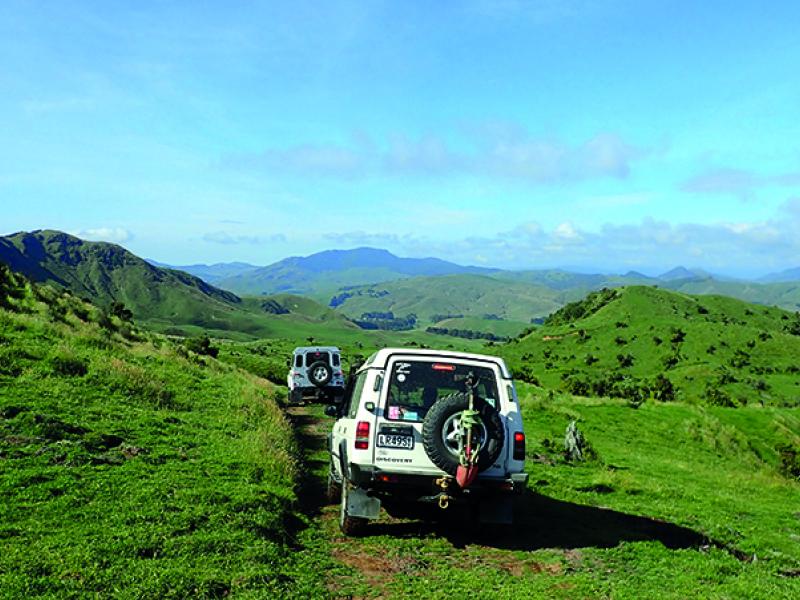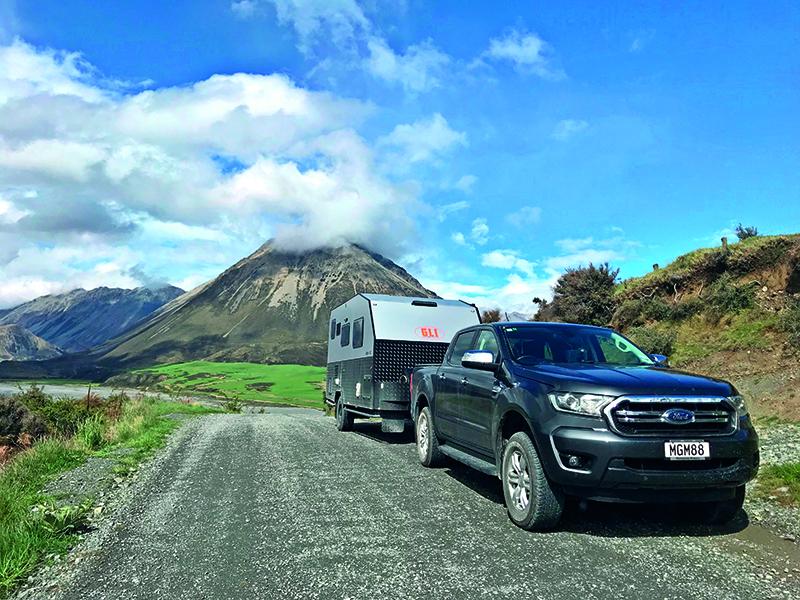The top of the South Island 360° views are beyond words! This is definitely the best view that I have seen from any summit in New Zealand and well worth the detour. The United States used to have an observatory on the mountain and some of the infrastructure is still visible. There is a rumour that this was built following the famous Kaikoura UFO sightings. Have a look on Google and see what you find.
From here, either return to Mill Flat for another night or head North to Pelorus Bridge. Back in the 19th century, the area around the bridge had been designated as the site of a settlement and not forested. The settlement never came to pass and so the area remains covered in virgin native bush with incredible birdsong.
On the way, you will pass through Havelock, “The gateway to the Sounds” and famous for its mussels and oysters.
There is a great campsite with shop, café and toilets. The water in the Pelorus River is crystal clear with plenty of rocks for everyone to jump off. Be careful though, because the water is so clear, it looks much shallower than it actually is. Great fun for the big and small kids alike.
Nelson is worth a visit. My parents, who used to live in the area, still swear that the “Haven” Fish n Chip shop is the best in New Zealand.
The next point of interest on the tour is the old docks at Mapua. These were once used for importing fertilizer and were once heavily contaminated. All that has long since gone and there is now a thriving retail and hospitality centre. The retail is quirky, selling everything from handmade hats to fantastic pieces of artwork predominantly made from recycled tools and equipment. Even if you don’t buy, and some of it is very expensive, it’s well worth spending a few hours looking in the shops and having something to eat and drink in one of the several cafes and bars next to the river.
From Mapua, I suggest carrying on to Marahau and Old MacDonalds farm campsite. My parents used to have a house here and I first came in 1974, when I was six. I’ve kept going back and am considered to be a “local”, which is a great privilege.
Marahau is the gateway to the Abel Tasman National Park. Despite being the smallest, it is also the most visited National Park in New Zealand.
Being at the end of the road, Marahau is far more laid back than Kaiteriteri, its more popular neighbour. This is largely because the beach at Marahau is very tidal and goes out a long way at low tide, whereas the beach at Kaiteriteri can be used at all states of the tide.
Marahau translates to “windy garden” and if you like shell fish, a quick trip onto the sands at low tide will see you returning with ample cockles, pipis and oysters for a good feed.
There’s heaps to do and it’s worth spending a few days here. If you like tramping and beaches, you can either walk in from the park café (we highly recommend the pizzas and Hungarian goulash as well as the homemade desserts), or catch a water taxi to anywhere in the park and walk back. The beaches are some of the best in the world and seldom very busy, particularly outside school holidays. My favourite month is March. There is no sea breeze, less people and the sea has had all summer to warm up. You can often get a whole secluded beach to yourself.
Watch the wekas though. They will run out of the bush, steal your lunch and disappear before you know what’s happened.
There are also numerous sea kayak rental companies offering either simple kayak rental or guided trips.
I have a sea kayak, which I leave with friends in Marahau. It’s a fantastic way to see the park, staying close to the shoreline or visiting Adele and Fisherman Islands, or both. You will see dolphins, turtles, stingrays and seals. Both islands are pest free and the birdsong is something to be heard.
More adventurous types can also sky dive at Motueka Airfield or head up into the park with a guide to go canyoning. I haven’t done either, but the canyoning looks like great fun for all the family. I have done it several times on trips to Europe and it’s excellent fun.
You can book trips and water taxis at the Abel Tasman Centre on the sea front. You can also enjoy a drink and a great meal at the Hooked Café next to the shop.
Another short excursion is to the world famous Split Apple rock. You can either paddle around to it or drive. The beach is great and swimmable at all states of the tide. There are also some great caves that you can paddle through.
If you walk down to the end of the sandspit and look across the narrow stretch of water, you will see the remains of an old quarry dock. From here, granite and marble mined from Takaka Hill was taken to Nelson to build the Cathedral. At low tide, you can walk across and make out the remains of the rail tracks that were used to deliver the granite. There are also still a few blocks which were left on the beach.
During the incoming tide, you can swim here. The water is warm after having passed over the hot sand. You will also see many sting-rays on their way in to feed on crabs and shellfish. If you see one, don’t be afraid. They are gentle creatures and only present a danger if they are startled or approached from above and behind. Their only predator is Orca and I have only once seen Orca close to the shore.
We often spend a week or so at Old Macs and one of our favourite day trips is heading over Takaka Hill and into Golden Bay.
In the second part of this adventure, we will travel into Golden Bay and down the West coast as far as we can drive.
Images and words by Richard Soult. Part one of two.






